An eternal season for killings
KABUL -- Dread tingled down my spine as I scanned the crowd for my colleague. He’d disappeared into the group of revelers only seconds ago. It felt too long.
It was dusk and we were in the heart of Taliban territory in Afghanistan. Well, not quite, but the isolated place certainly had the trappings of an insurgent haven.
A sea of opium poppies stretched as far as the eye could see, with their pink-and-white blooms swaying in the sultry wind. The air was thick with pollen and insects. Video journalist Rateb Noori and I were in a village in the teetering southern Afghan province of Uruzgan to report on the harvest, a prime source of Taliban funding that was expected to swell insurgent coffers.
To celebrate the bumper crop, the farm labourers — among them insurgents who had massed from neighboring districts — broke into a traditional rope game known as Dora. On a dusty clearing between the bountiful farms, they lashed one another with long ropes, knocking down opponents and raising pocks of dust.
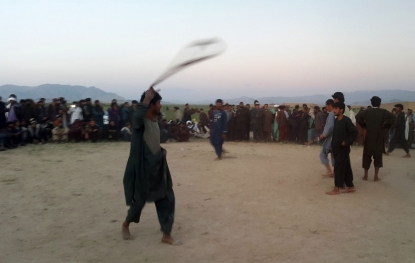 (AFP / Rateb Noori)
(AFP / Rateb Noori)My eyes were trained on Rateb as he filmed in the heart of the colourful celebration. I had offered to hold his tripod as he plunged right in. In that carnival atmosphere, an ice-cream cart pulled up nearby. A reveler randomly sidled up to me and offered a fresh cone slathered with flavoured syrup. But the friendly gesture only left me questioning whether I stood out as an outsider even though I was dressed in local garb and had grown a stubble in order to blend in.
Just then, Rateb disappeared from my line of sight. I felt a shot of dread. He emerged only minutes later, having gotten unique footage of the celebration and a huge sense of relief washed over me. We swiftly pulled out of there.
Dread was a constant during the two and a half years that I was posted as AFP’s Kabul bureau chief. When you cover what’s been dubbed as a ‘forever war,’ that edgy feeling that things might go horribly wrong at any moment never quite leaves you. Afghanistan is one of the most perilous countries for journalists, but that hardly stopped us from traveling far and wide to tell the stories that must be told.
As insecurity grew during my posting, a constant — and enervating — sense of hyper vigilance became a necessity to keep my team safe. Movements were always calculated.
No matter where we went, it became a conditioned reflex to first look for escape routes.
A period of calm always inspired foreboding because every lull was cyclically followed by terrible carnage. And just when you thought it couldn’t get any worse, it always did.
But despite the constant vigilance, nothing prepared us for the deadly truck bombing on May 31 that occurred close to our office-and-residence in Kabul. Its suddenness was terrifying. It was a beautiful crisp morning and I was reading in bed. One minute birds were warbling in the trees, the next I was jolted by a piercingly loud bomb that tore through the heart of our neighbourhood.
Like many others, we initially imagined the worst and dashed to take cover in our underground safe room — we thought we ourselves were under attack. Our cleaner, a gentle woman, was trembling and sobbing next to me. My fingers were frantically skittering over my cellphone as I tried to reach my bureau colleagues — one of them would have been on his way to work at the time if it weren’t his day off.
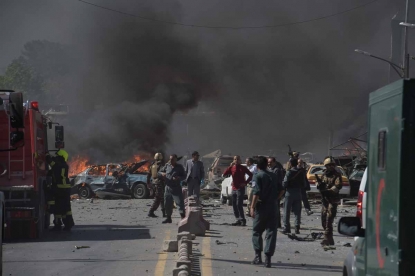 Afghan security forces arrive at the site of the May 31, 2017 massive car bomb attack in Kabul.
(AFP / Shah Marai)
Afghan security forces arrive at the site of the May 31, 2017 massive car bomb attack in Kabul.
(AFP / Shah Marai)We soon emerged, gingerly navigating broken glass all around us, as it became clear that we weren’t the only ones hit. The massive bomb that detonated from a sewage tanker blew out windows in a mile-wide radius. There was carnage in the streets and clouds of smoke in the sky. There was pandemonium and fear like I have never seen. It felt like Kabul city, no stranger to bombings, was having a nervous breakdown.
It later emerged that more than 150 people died and many of those missing would never be found, presumed to have been blown to pieces. The scale of the human tragedy forced the journalist in me to plunge into action, blocking off my inner quake. It’s only weeks later that I can peel back my feelings to write with some clarity about how my heart aches for this beautiful country.
 The crater left by the May 31, 2017 truck bomb in Kabul.
(AFP / Wakil Kohsar)
The crater left by the May 31, 2017 truck bomb in Kabul.
(AFP / Wakil Kohsar)In Afghanistan, it is forever a season of killings. No matter where you run, you remain squarely in the crosshairs of death. Afghans are dying in greater numbers now than at any time since the US-led invasion in 2001. The ritual of mourning never seems to end.
In this stalemated war of attrition, you know the psychological scars are deep when the neighborhood game of “cops and robbers” morphs into “cops and bombers”, with little children raising their skinny arms to mime the squeezing of a trigger. The young and old dull their senses with opiates. Post-traumatic stress is a silent epidemic.
Graveyards are forever expanding, gaining a life of their own. I once met a family enjoying a picnic inside a graveyard in Kabul. Perhaps that’s where they felt the safest — among the dead.
 Snow-covered cemetery in Kabul, January, 2014.
(AFP / Shah Marai)
Snow-covered cemetery in Kabul, January, 2014.
(AFP / Shah Marai)Not surprisingly, graveyards are a metaphor for many things in Afghanistan: The country is a graveyard of empires. A graveyard of stories. A graveyard of broken dreams.
It is very telling that the singer Ahmad Zahir, dubbed as Afghanistan’s Elvis, remains a sensation nearly four decades after his death. He shot to popularity in the years just before Afghanistan descended into a forever war. Many sublimate themselves into his lilting melodies, wafting from roadside kiosks, smartphones and car stereos. His bold lyrics evoke nostalgia about a pre-conflict past, a faded era of modernity — a constant reminder that Afghanistan is sliding backwards.
The biggest casualty of war is a loss of hope. Hordes of young Afghans I know are looking to escape the country. Migration to the West is the door to life, but for the majority that door has been slammed shut.
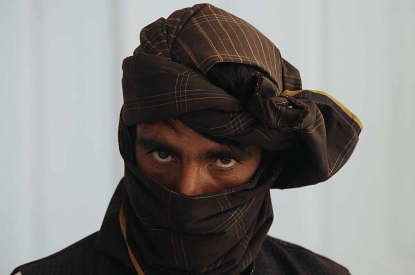 A former Taliban fighter looks on after he joined Afghan government forces at a ceremony in Herat, June, 2013.
(AFP / Aref Karimi)
A former Taliban fighter looks on after he joined Afghan government forces at a ceremony in Herat, June, 2013.
(AFP / Aref Karimi)Many Afghans are trapped between insurgent groups and abusive state actors. As the conflict unspooled over 16 years, strongmen with unsavory pasts were propped up to fight insurgents — from unruly militiamen sowing tyranny in their fiefdoms to torturers in military uniform and policemen kidnapping young boys to be their sex slaves.
As the war became plagued with setback after setback, the West’s initial goal of nation building centered on decency and human rights has fast receded. Insecurity has also spawned a crisis of institutionalised torture. One human rights defender with access to prisons in eastern Afghanistan told me inmates suspected of insurgent links were threatened with such beatings to the genitals that would make it “impossible to sire children”, a stinging humiliation in Afghan culture. Another in southern Afghanistan detailed various lurid torture practices, but joked morbidly that electric shocks had lately become less common — only because, he suspected, electricity was in short supply.
But even as Afghanistan has become a byword for turmoil, it is also home to the best of humanity. I will never forget this stunning wedding celebration in a frontline village bordering Turkmenistan that humiliatingly routed the Taliban.
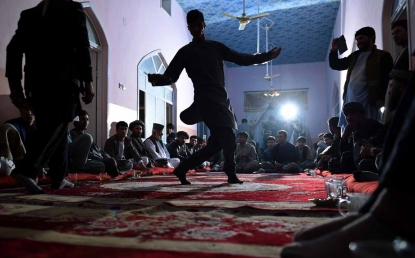 (AFP / Wakil Kohsar)
(AFP / Wakil Kohsar)And these underground women poets braving death for verse.
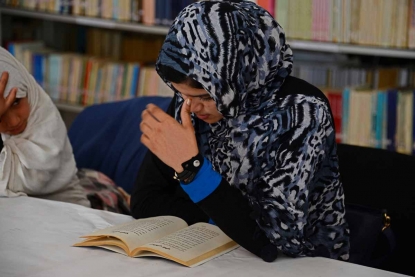 (AFP / Javed Tanveer)
(AFP / Javed Tanveer)
And this female skier fighting taboos with — wait for the brilliant twist — the help of mullahs.
 (AFP / Shah Marai)
(AFP / Shah Marai)And these brave comedians calling out abusive warlords and inept officials with the outraged power of mockery.
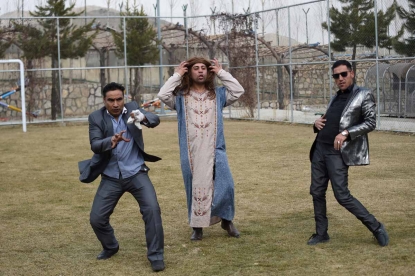 (AFP / Wakil Kohsar)
(AFP / Wakil Kohsar)It may seem that Afghanistan is staring down an abyss, but the courage of its people offers a hope that cannot die.
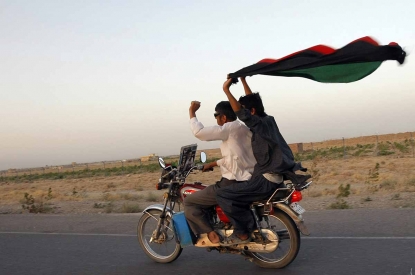 (AFP / Behrouz Mehri)
(AFP / Behrouz Mehri)




